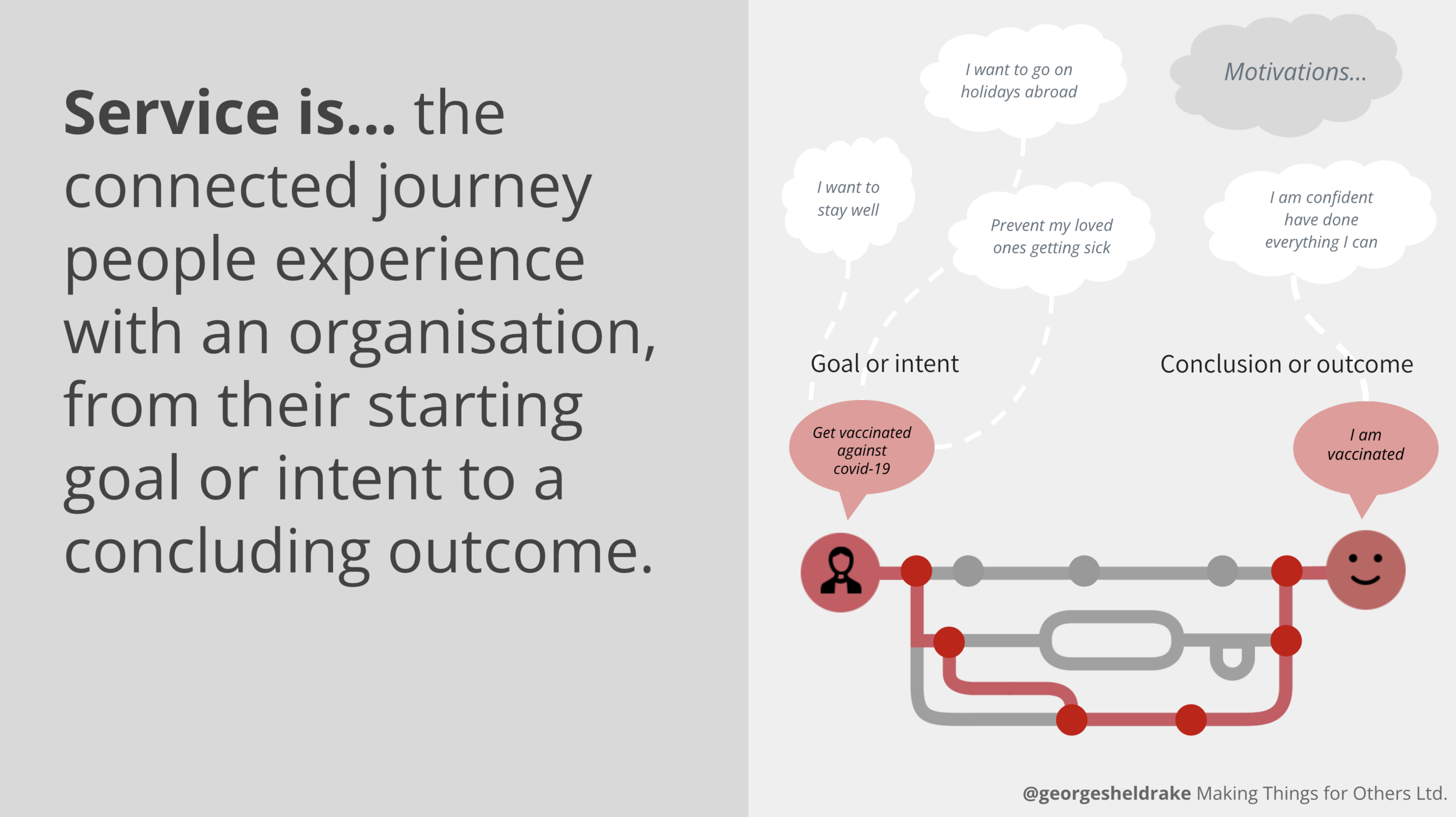How to define ‘services’?
Since 2014 I have worked on service strategy across many UK government departments.
These include UK MoJ, Land Registry, DfE and most recently in NHS Digital (see this post) where I had the opportunity to refine my service thinking for the health space.
Learnings from health
Health services in the NHS are highly complex interconnected networked services. Considering service language in this space meant I had to refine the logic models used to better explain these and make service design frameworks.
User-centred design practitioners expressed being overwhelmed by the scale of the task when using ‘end-to-end’ or ‘whole’ service thinking in health. They felt that doing ‘good service’ design in this way felt like an almost impossible task, and organisationally was actually out of scope for their area of work.
To combat this it’s important to help service designers, doers and managers have the appropriate language to define their work and scope in a more detailed nuanced way. My feeling here and in other organisations is that oversimplification of service design narratives can become a barrier to understanding one part within a wider system.
The nature of complex services means good communication and shared understanding are even more important.
Building on service thinking
For this work, I spent some time investigating the different meanings and ways of defining ‘service’ across the government and NHS. Interviewing several experts across digital who have worked on the delivery of service lists, service thinking or projects to make sense of how we use service strategically. As well as reviewing existing models that people were using including the great work done by GDS, Lou Downe, Richard Pope and Kate Tarling some things like (this and this) and my previous work.
This work helped to define a logic framework to describe health service structures in a more nuanced way. From this work comes the following 5 service considerations I used to help describe the systematic nature of services to others.
By no means extensive this is just my latest rationale that has helped teams (and leaders) understand their ‘service’ place in the world.
I hope some of these can help you on your service journeys…
1. ‘Service’ goes across every path as a network or connected system and may not be linear.
Actions
Focus less on language like ‘end-to-end’ that might imply linear journeys and more on being systematic or holistic.
Help support those we work with to better understand the systematic nature of service so that people think less of it as a binary concept.
2. ‘Service’ journeys are delivered in parts, at different scales, by different partners and owners (called composite services by Richard Pope) together these make the ‘whole’.
Actions
Where organisations have different responsibilities, technology or conflicting remits this can get even more complex, be clear about this complexity.
While we can’t always design ‘whole’ services, we can better consider the ‘whole’, and improve how we deliver connections across a journey.
3. When we try to understand we should refer to the actual journey as experienced by the people who use it, (including all the unintended bits we didn’t design).
Actions
Be clearer about the difference between intent and implementation and help others understand what this means in real terms.
Measure and discuss service performance, outcomes and policy success on the service as it is, rather than what was intended.
Be clear how a human-centred approach delivers value to the business!
4. Not all service journeys are goal-based is especially relevant in health where ‘treatment’ is not directly driven by goals and might not have a typical ‘achievement’ when completed.
Actions
Always consider the sensitive nature of journeys in service language, a conclusion in a health service like cancer might not be the achievement of a goal – but the best possible outcome.
Think about why people do things from both organisational motivation and user motivation. Often user ‘goals’ as described in government service don’t cover the ‘why’. Eg. is it a user goal to ‘Get a vaccination passport’ or are they motivated by going on holiday and this is a requirement by the government that enables their ultimate goal?
5. Services are made up of multiple, diverse qualities. They are not singular descriptions. A service description should be detailed, nuanced, systematic and compatible, to better describe the complicated things we are trying to do in context of the whole organisation.
Actions
Worry less about defining ‘service’ as a word, and more about describing it in an additive way (like tags). This helps when you have multiple stakeholders and varied services.
Find ways to unite the expertise of systems people. For example, UCD teams and enterprise architects often have different views and languages to describe the same thing. While the end goal is the same, conflict over language and meaning can be a barrier.

